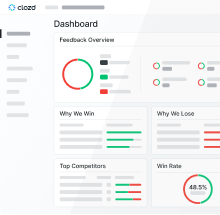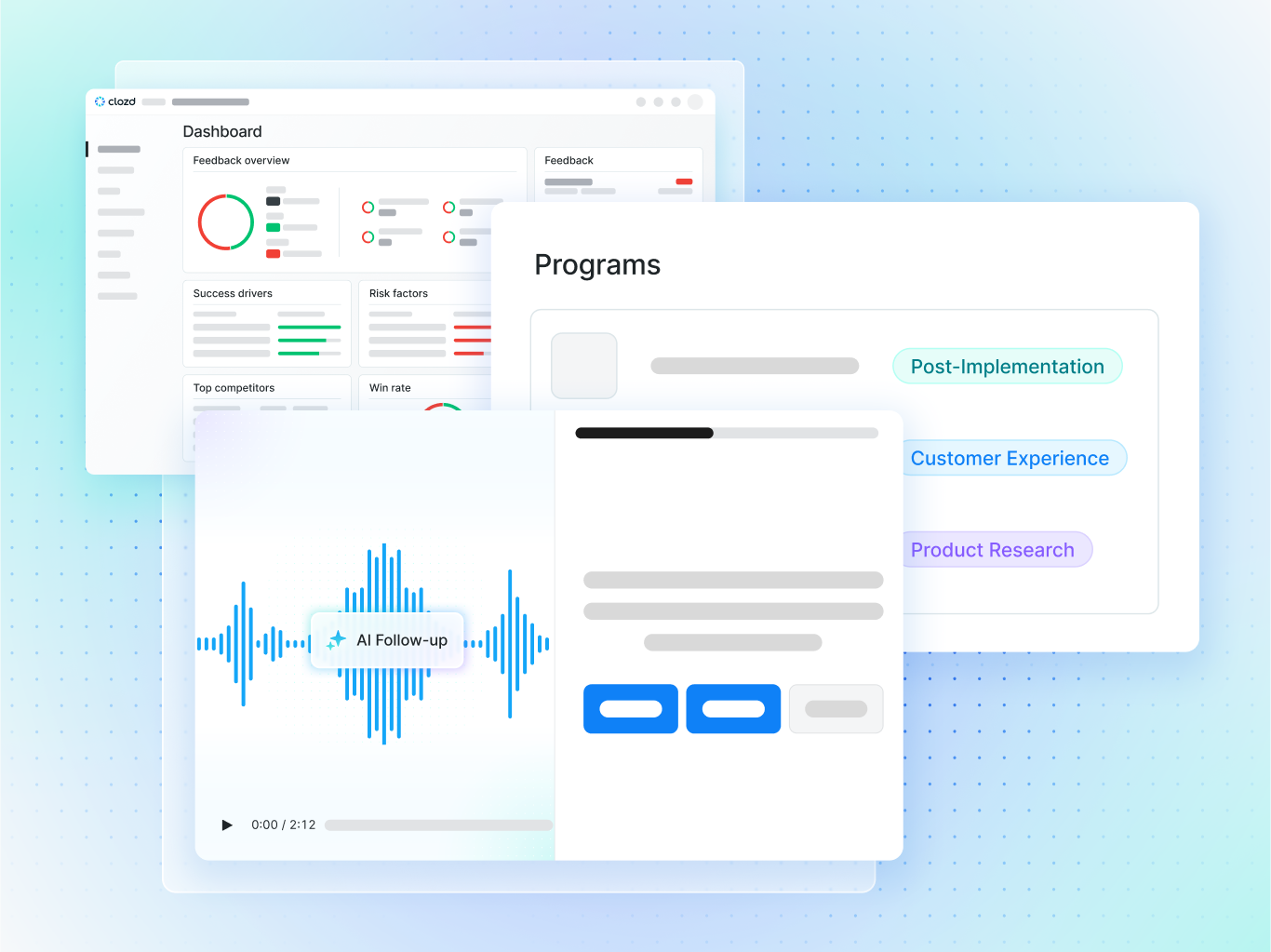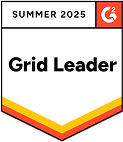In the realm of customer success and experience, gathering feedback is not just a task—it's a strategic endeavor. The insights derived from customer feedback can drive innovation, enhance customer satisfaction, and ultimately, boost your business's bottom line. To truly harness the power of feedback, it's crucial to identify who you should engage with to obtain the most relevant, comprehensive, and actionable insights. This guide will delve into the various stakeholders you should consider and the strategies that will help you extract deep and meaningful feedback, empowering your organization to stay ahead in a competitive marketplace.
Understanding Customer Feedback
Customer feedback is the information provided by clients about their experience with your product or service. This feedback can take many forms, including opinions on product functionality, customer support interactions, and overall brand experience. It encompasses both qualitative and quantitative data, offering a comprehensive view of customer satisfaction and areas for improvement. Listening to customer feedback not only highlights what is working well but also reveals the gaps and opportunities for enhancement. However, not all feedback holds the same weight—targeting the right sources is essential for gathering high-value insights that can inform business decisions.
Why Is Customer Feedback Important?
Customer feedback is the cornerstone of a customer-centric business strategy. Beyond identifying pain points and understanding what customers need, feedback also uncovers emerging trends in usage, preferences, and shifting expectations. Organizations that prioritize customer feedback are better equipped to adapt their products and services, ensuring ongoing relevance and competitiveness. Further benefits of actively seeking feedback include fostering long-term loyalty, reducing churn, and building lasting relationships with your audience. When feedback is systematically collected and analyzed, it becomes a catalyst for continuous improvement, driving the evolution of products, services, and the overall customer journey.
Key Stakeholders for Gathering Feedback
To maximize the effectiveness of your feedback program, it's important to engage with a diverse group of stakeholders. Each group offers unique perspectives that can enrich your understanding of the customer journey. Engaging directly and indirectly with these various groups will help you uncover distinct insights, clarify misunderstandings, and create a well-rounded feedback ecosystem.
1. End Users
End users are the individuals who interact directly with your product or service. They experience the tangible outcomes of your offering, making their feedback especially valuable. Their firsthand accounts shed light on usability issues, unmet needs, desired features, and overall levels of satisfaction. By deeply understanding their experiences, you can prioritize improvements that make a real difference.
How to Engage End Users
- Live and Asynchronous Flex Interviews: Prioritize live and flexible asynchronous interviews to dive deeply into user experiences. Whether conducted in real-time or at the user's convenience, these interviews offer direct insight into motivations, challenges, and expectations—surfacing details that surveys or crowdsourced feedback often overlook. With the flexibility to adapt questions based on responses, interviewers gain a holistic view of user perspectives and can clarify points in the moment.
- Surveys and Questionnaires: While they can collect large amounts of feedback quickly, surveys and NPS questionnaires typically offer only surface-level insights. They help identify trends and broad pain points, but often miss the context behind user responses.
- In-App Feedback: Pop-ups, chat interfaces, and tooltips provide opportunities to capture real-time reactions, though these moments are often brief and may not give users the chance to share in-depth feedback.
- Usability Testing: Observing users interact with your product highlights usability challenges, yet without follow-up conversation, the underlying causes can remain unclear.
- Online Communities and Forums: These platforms create space for users to interact and share experiences organically. However, feedback here is generally unsolicited and may be less structured, making it harder to extract actionable insights.
When seeking comprehensive understanding and actionable direction, live and asynchronous flex interviews offer the richest end-user feedback. Other methods can supplement these core conversations but often only capture fragments of the overall user experience.
2. Customer Success Teams
Customer success teams are on the front lines of customer interaction. They build lasting relationships with customers and have a wealth of qualitative insights into their needs, challenges, and victories. Their proximity to customers makes them a rich source of feedback, providing context and nuance that might not be apparent from direct customer responses alone. Moreover, their ability to interpret and escalate feedback ensures that action is taken where it matters most.
Leveraging Customer Success Teams
- Regular Check-Ins: Schedule recurring meetings where customer success teams share insights gathered from ongoing customer interactions. This ongoing dialogue helps surface recurring themes and emerging issues promptly. [ADD LINK TO CUSTOMER JOURNEY BLOG HERE]
- Feedback Loops: Establish formal mechanisms—such as ticket systems or shared dashboards—where customer success teams can log feedback for cross-team visibility. Encourage collaboration between customer success and product or support teams to devise solutions based on real-world input. [Add workflows here, or platform overview]
- Case Studies: Use detailed case studies from customer success teams to illustrate the impact of specific pain points and highlight areas for enhancement.[Add clozd case studies here?]
3. Sales and Marketing Teams
Sales and marketing teams interact with customers at different stages of the customer journey, from initial awareness to long-term engagement. They possess insights into what initially attracts customers, expectations set during the sales process, and the questions or concerns that commonly arise. Their perspective is vital to understanding how well your brand promise aligns with actual customer experiences, and where adjustments to messaging or positioning may be necessary.
Engaging Sales and Marketing
- Feedback Sessions: Hold regular sessions where sales and marketing teams present customer objections, frequently asked questions, and insights from lost deals or churned clients. Discuss these insights alongside suggestions for improvement.
- Customer Journey Mapping: Collaborate with these teams to map the complete customer journey and identify key touchpoints where feedback collection is both feasible and impactful.
- Win/Loss Analysis: Analyze successful and unsuccessful sales opportunities to glean actionable takeaways about how your product and messaging resonate with different customer segments.
- Content and Campaign Analysis: Review the effectiveness of marketing campaigns by assessing not only conversion rates but also the feedback received regarding messaging clarity, relevance, and appeal.
4. Product Development Teams
Product development teams are responsible for creating, refining, and maintaining your offerings. Their direct involvement in the feedback process ensures that insights collected from various stakeholders lead to actionable improvements and well-prioritized roadmaps. They are equipped to balance technical possibilities with customer needs, leading to solutions that drive both innovation and satisfaction.
Integrating Product Development
- Feature Prioritization: Feed systematically gathered customer feedback into the prioritization framework to identify features or changes that will have the highest positive impact.
- Beta Testing: Invite product development teams to be active participants in beta testing programs. Encourage them to engage directly with testers and observe usage patterns to capture detailed feedback before a full-scale release.
- Collaborative Workshops: Facilitate collaborative workshops where product teams interact with other departments and customers to brainstorm solutions for recurring issues.
- Prototyping Sessions: Use rapid prototyping guided by customer feedback to quickly experiment with potential solutions, reducing the risk of developing unwanted features.
5. Support Teams
Support teams interact with customers seeking assistance or reporting issues, making them frontline recipients of critical feedback. They observe patterns in reported bugs, confusion points, and the types of inquiries that signal gaps in usability or documentation. Harnessing insights from support teams helps reduce friction in the customer experience and pre-emptively resolve common pain points.
Harnessing Support Team Insights
- Ticket Analysis: Review support tickets to detect recurring topics and frequently faced obstacles.
- Resolution Surveys: Incorporate follow-up surveys after ticket resolution to gauge customer satisfaction and gather ideas for service improvement.
- Knowledge Base Updates: Use feedback from support interactions to update help articles, tutorials, and FAQs, fostering a more self-sufficient customer base.
6. Channel Partners and Resellers
In many industries, products and services are delivered via channel partners or resellers who interact with a broader market. These partners offer a unique, external perspective and can supply insights into market demands, competitive landscape, and customer feedback that may not come directly to your organization.
Engaging Channel Partners
- Joint Feedback Sessions: Hold collaborative meetings to discuss feedback gathered by partners and strategize improvements.
- Partner Surveys: Send targeted surveys to partners, asking for their views on product performance, customer happiness, and support needs.
- Market Intelligence Sharing: Encourage partners to report trends or emerging needs identified in their territories.
Best Practices for Collecting Customer Feedback
To ensure your feedback program is effective, consider the following best practices. Implementing these practices can help you systematically gather, analyze, and act on feedback for continuous improvement.
Use a Mix of Qualitative and Quantitative Methods
Combining qualitative feedback (e.g., open-ended questions, interviews, focus groups) with quantitative data (e.g., structured surveys, NPS, usage analytics) provides a holistic view of customer sentiment. This mixed-methods approach uncovers not only the "what" but also the "why" behind customer behaviors and preferences.
Ensure Feedback Is Actionable
Feedback should be detailed, specific, and actionable. Avoid vague questions and design feedback prompts that encourage constructive responses. Focus on issues and opportunities within your control and ask follow-up questions where necessary to clarify ambiguous responses.
Foster a Culture of Feedback
Cultivating a feedback-friendly culture is essential to making customers and employees feel heard and valued. Highlight examples where feedback has led to positive change, recognize contributors, and ensure feedback is acknowledged swiftly. Train teams to actively listen and engage empathetically with both positive and critical feedback.
Regularly Review and Update Your Feedback Strategy
Customer needs and market conditions evolve over time. Make it a standard practice to review and update your feedback collection strategy periodically. Monitor the effectiveness of your feedback channels, retire ineffective methods, and experiment with new initiatives to keep the process dynamic and responsive.
Close the Feedback Loop
Always communicate to stakeholders how their feedback is being used. Share outcomes, updates, and changes that result from the feedback you receive. Closing the loop builds credibility and motivates continued participation, solidifying trust between your organization and its stakeholders.
Integrate Feedback Across Teams
Feedback should be accessible and actionable for all relevant departments, not siloed within specific teams. Use centralized platforms or dashboards to disseminate insights, facilitate collaboration, and ensure feedback translates into meaningful improvements across the entire organization.
Conclusion
Gathering feedback from the right stakeholders is crucial for deriving actionable insights that can enhance customer success and experience. By engaging end users, customer success teams, sales and marketing, product development, support teams, and channel partners, businesses can construct a feedback program robust enough to capture every critical viewpoint. Remember, the key to successful feedback lies not just in its collection, but also in acting on these insights to continuously evolve and craft a superior customer experience. When feedback becomes an integral part of your organization’s decision-making, you empower your teams to innovate, solve challenges proactively, and create lasting value for your customers.











.svg)








.png)


.svg)

.svg)




